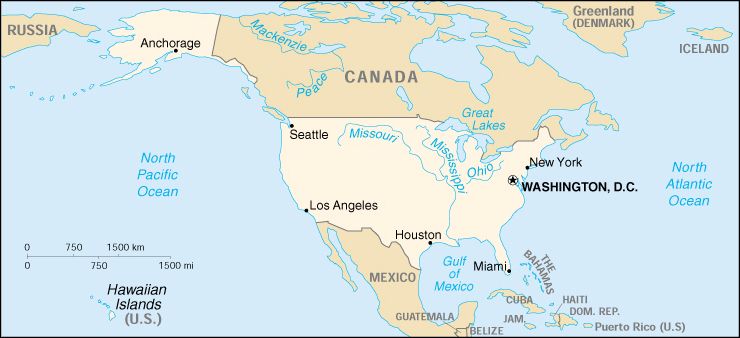Destinations:
- Bath
- Belgium
- Bradgate and Groby
- Corfe Castle
- Dorset
- Dorset's Beaches
- The Grand Canyon
- Greece
- Hawaii
- Hawaii's Volcanoes
- The Hoover Dam
- Ibiza
- Ireland
- Kenilworth
- Las Vegas - 1
- Las Vegas - 2
- Montreal
- New York
- Niagara Falls
- Salisbury
- Scotland
- Skellig Islands
- Special Effects and Others
- Stonehenge
- Stratford
- Toronto
- Warwick
- York
890,000 visitors
since March 2001.

The Grand Canyon

America |

|
Background: The United States became the world's first modern
democracy after its break with Great Britain (1776) and the adoption
of a constitution (1789). During the 19th century, many new states were
added to the original 13 as the nation expanded across the North American
continent and acquired a number of overseas possessions. The two major
traumatic experiences in the nation's history were the Civil War (1861-65)
and the Great Depression of the 1930s. Buoyed by victories in World Wars
I and II and the end of the Cold War in 1991, the US remains the world's
most powerful nation-state. The economy is marked by steady growth, low
unemployment and inflation, and rapid advances in technology. Location: North America, bordering both the North Atlantic Ocean and the North Pacific Ocean, between Canada and Mexico Area: Total: 9,629,091 sq km Land: 9,158,960 sq km Water: 470,131 sq km Note: includes only the 50 states and District of Columbia Land Boundaries: Total: 12,248 km Border Countries: Canada 8,893 km (including 2,477 km with Alaska), Cuba 29 km (US Naval Base at Guantanamo Bay), Mexico 3,326 km Note: Guantanamo Naval Base is leased by the US and thus remains part of Cuba Coastline: 19,924 km Elevation Extremes: Lowest Point: Death Valley -86 m Highest Point: Mount McKinley 6,194 m Population: 275,562,673 (July 2000 est.) Ethnic Groups: white 83.5%, black 12.4%, Asian 3.3%, Amerindian 0.8% (1992) Note: a separate listing for Hispanic is not included because the US Census Bureau considers Hispanic to mean a person of Latin American descent (especially of Cuban, Mexican, or Puerto Rican origin) living in the US who may be of any race or ethnic group (white, black, Asian, etc.) Languages: English, Spanish (spoken by a sizable minority) Information courtesy of the CIA World Factbook. |
Copyright © 1992-2012 Adam Bartlett.